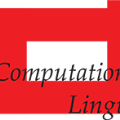Distributional semantics has had enormous empirical success in Computational Linguistics and Cognitive Science in modeling various semantic phenomena, such as semantic similarity, and distributional models are widely used in state-of-the-art Natural Language Processing systems. However, the theoretical status of distributional semantics within a broader theory of language and cognition is still unclear: What does distributional semantics model? Can it be, on its own, a fully adequate model of the meanings of linguistic expressions? The standard answer is that distributional semantics is not fully adequate in this regard, because it falls short on some of the central aspects of formal semantic approaches: truth conditions, entailment, reference, and certain aspects of compositionality. We argue that this standard answer rests on a misconception: These aspects do not belong in a theory of expression meaning, they are instead aspects of speaker meaning, i.e., communicative intentions in a particular context. In a slogan: words do not refer, speakers do. Clearing this up enables us to argue that distributional semantics on its own is an adequate model of expression meaning. Our proposal sheds light on the role of distributional semantics in a broader theory of language and cognition, its relationship to formal semantics, and its place in computational models.
翻译:分布语义学在计算语言学和认知科学的模型中取得了巨大的经验性成功?标准答案是,分配语义学在这方面并不完全充分,因为正式语义学方法的一些核心方面不够充分:真理条件、要求、参考和构成性的某些方面。我们指出,这一标准答案基于一种误解:这些方面不属于表达含义的理论,而是语言含义的表达方式,也就是说,在特定背景下的交流意图。在口号中:语言不是指,发言者不是指。 澄清这一点使我们能够在正式语义学方法的某些核心方面说得不够充分,因为正式语义学方法的一些核心方面:真理条件、要求、参考和构成性的某些方面。我们说,这种标准答案基于一种误解:这些方面不属于表达含义的理论,而是语义含义的某些方面,即特定背景下的交流意图。在口号上:语言不是指,发言者不是指。澄清这一点使我们能够认为,在正式语义学方法中分配语义学本身的分布语义学是其理论性含义的一个适当模型,我们认为,其理论性作用的一个较广的表达方式。







